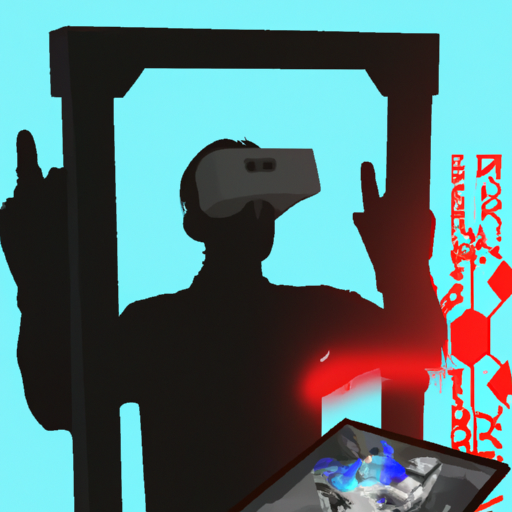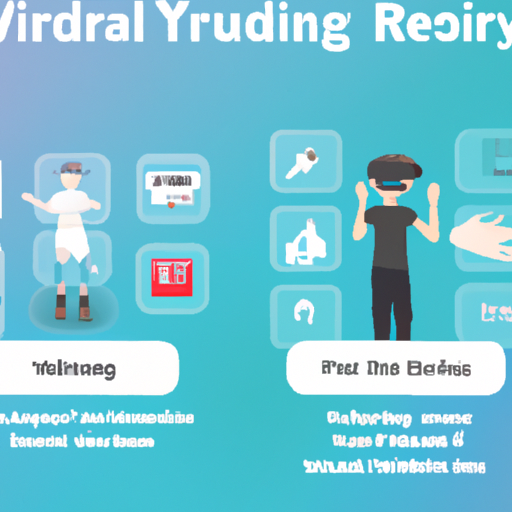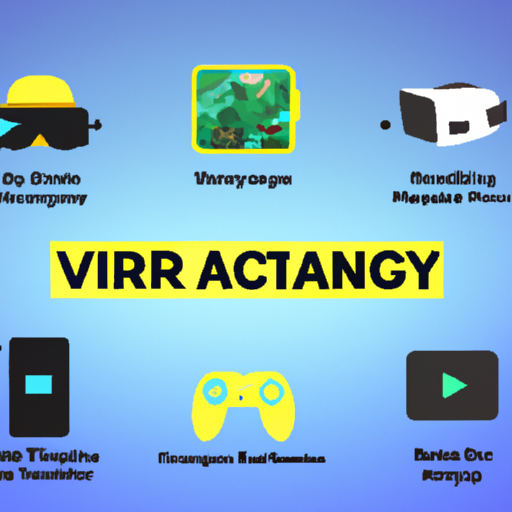-
Table of Contents
- Introduction
- Exploring the Potential of VR/AR for Industrial Design and Prototyping
- How VR/AR is Enhancing Quality Control in Manufacturing
- The Impact of VR/AR on Industrial Automation and Robotics
- Exploring the Benefits of VR/AR for Industrial Maintenance and Repair
- How VR/AR is Revolutionizing Industrial Training and Education
- Conclusion
“Unlock the power of VR/AR to revolutionize industrial and manufacturing processes.”
Introduction
Virtual Reality (VR) and Augmented Reality (AR) are rapidly becoming the go-to technologies for industrial and manufacturing industries. These technologies are being used to improve efficiency, reduce costs, and increase safety in the workplace. VR and AR can be used to simulate complex processes, provide real-time feedback, and enable remote collaboration. They can also be used to create virtual training environments, allowing employees to practice and hone their skills without the need for physical equipment. AR can be used to provide workers with real-time information and instructions, helping them to complete tasks more quickly and accurately. With the help of VR and AR, industrial and manufacturing industries are able to stay competitive in an ever-changing market.
Exploring the Potential of VR/AR for Industrial Design and Prototyping
The potential of virtual reality (VR) and augmented reality (AR) for industrial design and prototyping is immense. As technology continues to evolve, these tools are becoming increasingly accessible and powerful, allowing designers to create and test products in a virtual environment.
VR and AR can be used to create realistic 3D models of products, allowing designers to explore different design options and test them in a virtual environment. This can be done quickly and easily, without the need for expensive physical prototypes. Designers can also use VR and AR to simulate how a product will look and feel in the real world, allowing them to make adjustments before committing to a final design.
VR and AR can also be used to create interactive prototypes. Designers can create virtual environments that allow users to interact with a product in a realistic way. This can be used to test user experience and usability, as well as to identify potential problems before a product is released.
In addition, VR and AR can be used to create immersive experiences. Designers can create virtual worlds that allow users to explore a product in a realistic way. This can be used to create engaging marketing campaigns, as well as to provide customers with an immersive experience when using a product.
Finally, VR and AR can be used to create virtual training simulations. Designers can create virtual environments that allow users to practice using a product in a safe and controlled environment. This can be used to train employees on how to use a product, as well as to test new products before they are released.
Overall, the potential of VR and AR for industrial design and prototyping is immense. As technology continues to evolve, these tools are becoming increasingly accessible and powerful, allowing designers to create and test products in a virtual environment. This can help to reduce costs, speed up the design process, and create more engaging experiences for customers.
How VR/AR is Enhancing Quality Control in Manufacturing
The manufacturing industry is constantly evolving, and the introduction of virtual reality (VR) and augmented reality (AR) technologies is revolutionizing the way quality control is conducted. VR and AR are being used to improve the accuracy and efficiency of quality control processes, allowing manufacturers to reduce costs and improve product quality.
VR and AR technologies allow manufacturers to create virtual simulations of their production lines and processes. This allows them to test and evaluate the performance of their machines and processes in a safe and controlled environment. By simulating the production process, manufacturers can identify potential problems before they occur, allowing them to make adjustments and improvements to their processes before they are implemented in the real world.
VR and AR technologies also allow manufacturers to create virtual models of their products. This allows them to test the performance of their products in a virtual environment, allowing them to identify any potential flaws or defects before they are released to the public. This helps to ensure that only the highest quality products are released to the market.
In addition, VR and AR technologies can be used to create virtual training programs for employees. This allows employees to learn how to operate and maintain the machines and processes in a safe and controlled environment, reducing the risk of accidents and errors.
Overall, VR and AR technologies are revolutionizing the way quality control is conducted in the manufacturing industry. By allowing manufacturers to simulate their production processes and test their products in a virtual environment, they can ensure that only the highest quality products are released to the market. This helps to reduce costs and improve product quality, allowing manufacturers to remain competitive in an ever-changing market.
The Impact of VR/AR on Industrial Automation and Robotics
The advent of virtual reality (VR) and augmented reality (AR) technologies has had a profound impact on industrial automation and robotics. These technologies have enabled the development of more efficient and cost-effective solutions for industrial automation and robotics.
VR and AR technologies allow for the creation of virtual environments that can be used to simulate real-world scenarios. This allows for the testing and development of industrial automation and robotics systems in a safe and controlled environment. This can help to reduce the cost and time associated with the development of these systems. Additionally, VR and AR technologies can be used to provide training and instruction to operators and technicians, allowing them to become more proficient in the operation of industrial automation and robotics systems.
VR and AR technologies can also be used to improve the accuracy and precision of industrial automation and robotics systems. By providing a virtual environment, these technologies can be used to simulate the exact conditions of a real-world environment. This allows for the development of more accurate and precise systems that can be used in a variety of industrial applications.
Finally, VR and AR technologies can be used to improve the safety of industrial automation and robotics systems. By providing a virtual environment, these technologies can be used to simulate dangerous scenarios and allow operators to practice safety protocols in a safe and controlled environment. This can help to reduce the risk of accidents and injuries associated with the operation of industrial automation and robotics systems.
In conclusion, VR and AR technologies have had a significant impact on industrial automation and robotics. These technologies have enabled the development of more efficient and cost-effective solutions for industrial automation and robotics. Additionally, they have allowed for the development of more accurate and precise systems, as well as improved safety protocols. As these technologies continue to evolve, it is likely that their impact on industrial automation and robotics will only continue to grow.
Exploring the Benefits of VR/AR for Industrial Maintenance and Repair
The use of virtual reality (VR) and augmented reality (AR) technologies in industrial maintenance and repair is becoming increasingly popular. This technology has the potential to revolutionize the way industrial maintenance and repair is conducted, providing a range of benefits to businesses and their customers.
VR and AR technologies can be used to create virtual simulations of industrial equipment, allowing technicians to practice maintenance and repair tasks in a safe, controlled environment. This can help to reduce the risk of accidents and improve the efficiency of the maintenance and repair process. Additionally, technicians can use VR and AR to access detailed information about the equipment they are working on, such as schematics and instructions. This can help to reduce the time required to complete a task, as well as reduce the risk of errors.
VR and AR can also be used to provide remote support to technicians in the field. This can be especially useful in cases where a technician is working on a complex piece of equipment and needs assistance from an expert. By using VR and AR, the expert can provide real-time guidance and advice to the technician, helping to reduce the time required to complete the task.
Finally, VR and AR can be used to create virtual training programs for technicians. This can help to reduce the cost of training, as well as improve the quality of the training. By using VR and AR, technicians can gain a better understanding of the equipment they are working on, as well as the processes involved in maintenance and repair.
In conclusion, VR and AR technologies have the potential to revolutionize the way industrial maintenance and repair is conducted. By providing a range of benefits, such as improved safety, reduced time and cost, and improved training, these technologies can help businesses to improve the efficiency of their maintenance and repair operations.
How VR/AR is Revolutionizing Industrial Training and Education
Virtual reality (VR) and augmented reality (AR) are revolutionizing industrial training and education. These technologies are transforming the way people learn and interact with the world around them.
VR and AR provide an immersive experience that allows users to interact with their environment in a more realistic way. For example, in industrial training, VR can be used to simulate a hazardous environment, allowing trainees to practice safety protocols without putting themselves in danger. AR can be used to overlay instructions and diagrams onto a physical object, making it easier for trainees to understand complex concepts.
VR and AR can also be used to create interactive learning experiences. For example, AR can be used to create virtual classrooms, allowing students to interact with their environment in a more engaging way. VR can be used to create virtual simulations, allowing students to practice skills in a safe and controlled environment.
In addition, VR and AR can be used to create more engaging and personalized learning experiences. For example, AR can be used to create interactive lessons that are tailored to the individual student’s needs. VR can be used to create virtual tours of industrial sites, allowing students to explore the environment without having to leave the classroom.
Overall, VR and AR are revolutionizing industrial training and education. These technologies are providing a more immersive and engaging learning experience, allowing students to interact with their environment in a more realistic way. By utilizing these technologies, students can gain a better understanding of complex concepts and practice skills in a safe and controlled environment.
Conclusion
In conclusion, VR/AR technology has the potential to revolutionize the industrial and manufacturing industries. It can help to reduce costs, increase efficiency, and improve safety. It can also help to improve the quality of products and services, as well as provide a more immersive experience for customers. As the technology continues to evolve, it is likely that more and more companies will begin to adopt VR/AR technology in their operations.




